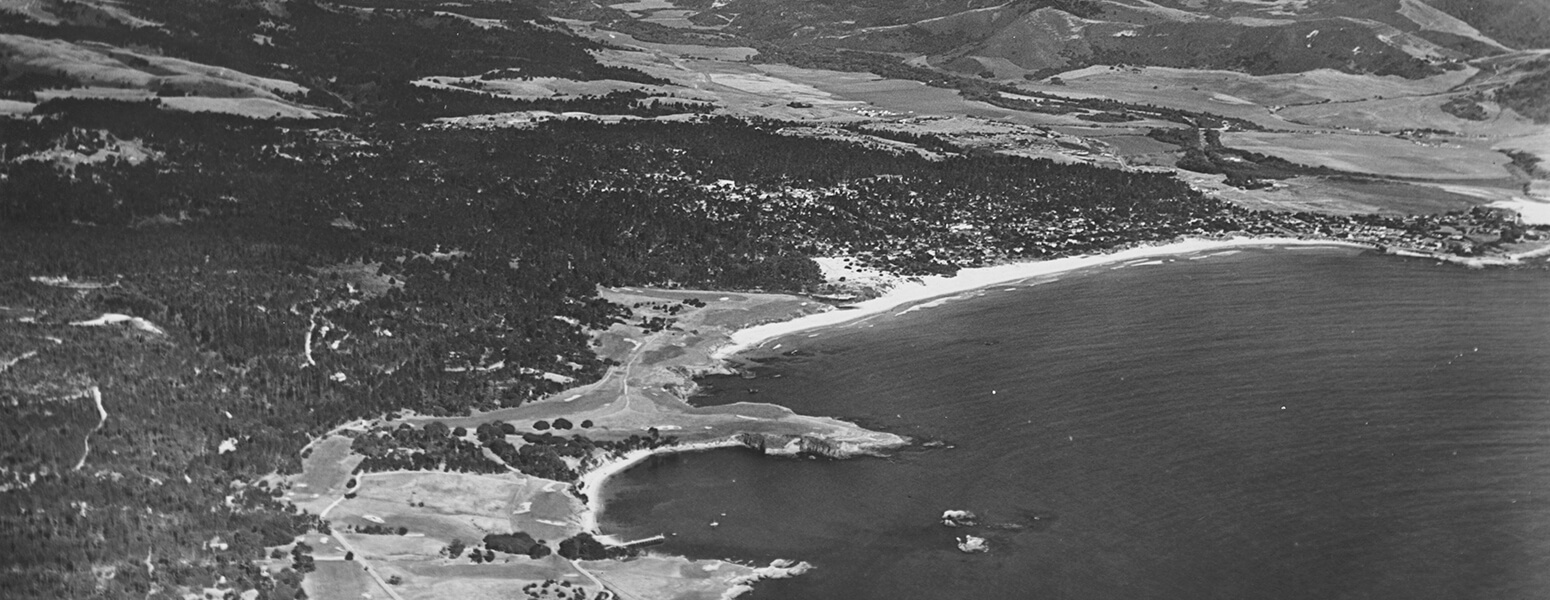Course Changes Over Time
 Thanks to the remarkable talents of original designers Jack Neville and Douglas Grant, Pebble Beach Golf Links has seen very few substantial changes over the years. The current figure eight routing is the same one that Neville and Grant laid out in 1919—starting at an old log cabin that had served as a way station for tourists on 17-Mile Drive.
Thanks to the remarkable talents of original designers Jack Neville and Douglas Grant, Pebble Beach Golf Links has seen very few substantial changes over the years. The current figure eight routing is the same one that Neville and Grant laid out in 1919—starting at an old log cabin that had served as a way station for tourists on 17-Mile Drive.
Though the design remained constant, those early years saw frequent and significant refinements as owner Samuel F.B. Morse brought in other architects to perfect the course.
Significant changes come shortly after the course was completed in 1919. The California Golf Association, which did not readily accept the new course as a site for its amateur championship, feels that the 345-yard par-4 18th hole was too easy. Morse turns to Arthur H. “Bunker” Vincent, who worked with the crew to lengthen the course (to 6,200 yards), change five greens and move the 18th tee to its current location near the 17th green. Consequently, 18 becomes a more challenging 379-yard par-4, requiring two first-class shots to reach the green.
A Great Finishing Hole is Born
In 1922, William Herbert Fowler transforms the 18th hole from the 379-yard par-4 to a 548-yard par-5 that is rarely attempted in two because of the severe penalty for failure. Today, 18 is quite simply the best finishing hole in golf.
Preparation for the National Amateur
The next major changes take place in preparation for the 1929 U.S. Amateur Championship. Amateur golfer H. Chandler Egan, who had won back-to-back U.S. Amateurs in 1904 and 1905, spearheads the project. He re-shapes and re-bunkers each green, moving the 1st tee to create today’s dog-legged opening hole, reconfigures the 10th hole, adds length to the 2nd, 9th and 14th holes, and moves the 16th green to a natural depression behind a grove of trees, extending the hole more than 100 yards.
A Vision is Fulfilled
Almost 70 years later, Pebble Beach Golf Links unveils its only other significant change: a new 5th hole, designed by golf legend Jack Nicklaus. The hole is placed on a parcel of prime oceanfront land that Pebble Beach Company had wanted to re-acquire for 80 years. Its conversion marks the realization of Morse’s original vision of an unbroken string of waterfront golf holes and, perhaps, the last major change in a golf course that was otherwise unbroken to begin with.
Notable Updates for the 2010 U.S. Open Championship
Pebble Beach Golf Links continuously strengthens the course facets to enhance player appreciation, heighten the challenge and exceed guest expectations. Under the direction of Arnold Palmer, additional preparations are made for the 2010 U.S. Open: four greens and 16 bunkers are rebuilt, altered or installed; 11 tees benefit from enhancements; six holes see the addition or adjustment of trees; and the total length of the course is extended to 7,040 yards.